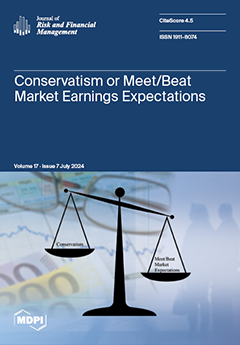The assessment of total risk-weighted assets (LTRWAs) in the banking sector is of the utmost importance. It serves as a critical component for regulatory compliance, risk management, and capital adequacy. By accurately assessing LTRWAs, banks can effectively meet regulatory requirements, efficiently allocate capital
[...] Read more.
The assessment of total risk-weighted assets (LTRWAs) in the banking sector is of the utmost importance. It serves as a critical component for regulatory compliance, risk management, and capital adequacy. By accurately assessing LTRWAs, banks can effectively meet regulatory requirements, efficiently allocate capital resources, and proactively manage risks. Moreover, the accurate assessment of LTRWAs supports performance evaluation and fosters investor confidence in the financial stability of banks. This study presents statistical analyses and machine learning methods to identify factors influencing LTRWAs. Data from Bahrain, Jordan, Qatar, the United Arab Emirates, and Yemen, spanning from 2010 to 2021, was utilized. Various statistical tests and models, including ordinary least squares, fixed effect, random effect, correlation, variance inflation factor, tolerance tests, and fintech models, were conducted. The results indicated significant impacts of the unemployment rate, inflation rate, natural logarithm of the loan-to-asset ratio, and natural logarithm of total assets on LTRWAs in regression models. The dataset was divided into a training group (90% of the data) and a testing group (10% of the data) to evaluate the predictive capabilities of various fintech models, including an adaptive network-based fuzzy inference system (ANFIS), a hybrid neural fuzzy inference system (HyFIS), a fuzzy system with the heuristic gradient descent (FS.HGD), and fuzzy inference rules with the descent method (FIR.DM) models. The selection of the optimal model is contingent upon assessing its performance according to specific error criteria. The HyFIS model outperformed others with lower errors in predicting LTRWAs. Independent
t-tests confirmed statistically significant differences between original and predicted LTRWA for all models, with HyFIS showing closer predictions. This study provides valuable insights into LTRWA prediction using advanced statistical and machine learning techniques, based on a dataset from multiple countries and years.
Full article




